Interview Collection: Interviews with Writers and Artists
60 Interviews, Organized by Primary Art Form
This is the page where you can find links to all of the traditional written interviews on Create Me Free (as opposed to visual interviews).
I’ve organized them as much as possible by the artist’s self-defined primary art form (visual art, fiber art, writing, other). However, none of these creatives can be boxed in so this is just a starting point for exploring their work!

I’ll begin by giving you a Table of Contents for this whole post so that you can get a sense of how to find what or who you’re looking for:
Visual Art (Painting, Drawing, Mixed Media)
Sue Clancy
Tamzin
Ms. Muse
Mya Dexter
Miss Marley
Jennifer Em
Helen Reynolds
Whitney Turetzsky
Helen Conway
Eva Lake
Ruthie
A.F.
Bunni
D
Visual Art (Photography, Videography)
Neil Milton
Danielle da Silva
Terry Lee Nelson
Visual Art (Fiber Art)
Claudia Wool
Sophie of Wallflower Weavings
Maria Arseniuk
Maryanne Moodie
Yarrow Magdalena
Ellen Schinderman
Meghan Shimek
Celia Bernardo
Athena Field
Weijue Wang
Dana Browne/Fannie Mitchen
Michelle Anais Beaulieu-Morgan
Chason & Tumaini (Acts of Kindness)
Janferie MacKintosh
Rebecca Robinson
Music
Heather Schmid
Anonymous
Alex Yalen
Mark
Writing
Story Carrier: Jane Clark's Substack
Wendi Gordon
Samantha Rose McRae
Jianna Heuer
Lauren Holt
Key Ocho
Robin Reardon
Jenn Zuko
Birgitte Rasine
Kari Bentley-Quinn
Tricia Easter
Nessa Nachelle
June Girvin
Russell Nohelty
Peter Smetanick
Leon MacFayden
Alex / Loreteller
Other Professionals and Creatives
Martin Greenwald, M.D.
Sara London

Visual Art (Painting, Drawing, Mixed Media)
Sue Clancy shares how art has been a powerful tool for survival, self-expression, and healing throughout her life. As a deaf, LGBTQ+ artist who grew up in a conservative religious environment, she reflects on how creativity helped her navigate trauma, rejection, and self-discovery. She discusses her work in hospitals and public spaces, illustrating stories that offer emotional repair, and the philosophy of focusing on the creative process rather than the outcome.
Mediums: illustration, painting, storytelling
"We have to express ourselves, see other expressions, we have to know, communicate, interact with thoughts and feelings. And that's why the arts are vital—it's the way we mentally, emotionally, connect and heal."
Interview includes discussion of:
Art as a Lifeline in a Restrictive Environment (Used drawing as a refuge during an abusive childhood, despite family opposition to creativity and education.)
Overcoming Perfectionism and Reframing Creativity (Shifted perspective from creating art as an act of defiance to embracing it as an enjoyable and meaningful process.)
The Role of Art in Emotional Healing (Illustrated Dr. Bob’s Emotional Repair Program First Aid Kit, a book focused on using storytelling and cognitive shifts to support mental well-being.)
Harassment, Identity, and the Impact on Creativity (Experienced harassment for her sexuality and deafness, leading her to change exhibition locations and ultimately relocate for her mental health.)
Feeding the ‘Good Wolf’ Through Art (Draws inspiration from the Two Wolves story, using art to focus on hope and joy rather than despair.)
Public Art and Community Impact (Creates work for hospitals, justice centers, and children’s programs, ensuring art is accessible to those in need of comfort and inspiration.)
Letting Go of Perfectionism in Creative Practice (Emphasizes process over product, rejecting perfectionist ideals tied to religious and societal expectations.)
Tamzin Merivale, an Irish artist, writer, and mentor, discusses her work creating Soul Sign portraits—energetic illustrations that reflect people’s unseen strengths and inner light. She shares how art has served as a powerful means of connection, healing, and self-discovery, both for herself and her clients. She reflects on the impact of personal health struggles on her creative work, the importance of holding space for others, and how storytelling plays a crucial role in emotional healing.
Mediums: illustration, writing, portraiture
"The portrait is powerful, I think, because it acts as a reminder—this is the dazzling truth of who you are, this is your magic, this is the light that others see in you."
Interview includes discussion of:
Soul Signs as a Tool for Self-Reflection (Her portrait process helps people recognize their inherent worth, often revealing aspects of themselves they didn’t fully see before.)
The Healing Power of Being Seen (Many of her clients struggle with feeling unseen, rejected, or disconnected from their authentic selves—art becomes a way to reflect their inner truth back to them.)
Holding Space as a Creative and Emotional Practice (Believes that providing a nonjudgmental, safe environment is just as important as the art itself in helping people heal.)
Health Struggles and Their Impact on Creativity (Having been hospitalized for a health condition, she understands how illness can disrupt creative flow but also deepen artistic insight.)
Storytelling as Emotional Release (Clients often share their personal histories as part of the portrait-making process, and she sees this storytelling as a vital aspect of emotional healing.)
The Transformational Nature of Art (Her own journey with art began as a form of personal exploration and evolved into a way to help others connect with their own energy and identity.)
Ms. Muse, a San Francisco-based artist, shares how femininity, feminism, and self-expression shape her artistic work. She uses Japanese sumi ink and honey-based watercolor to paint unapologetically feminine and vibrant portraits of women. She discusses how her art challenges the male gaze, embraces sex-positivity, and reclaims pink as a powerful color, despite facing criticism for her work being "too girly." She also reflects on how relocating to San Francisco from a restrictive upbringing allowed her to fully embrace her artistic identity.
Mediums: watercolor, sumi ink, mixed media
"I decided that it is perfectly okay to paint women without painting them for the male gaze."
Interview includes discussion of:
Reclaiming Femininity Through Art (Emphasizes that art celebrating femininity and pink hues is often dismissed, but she embraces it as a form of empowerment.)
The Freedom of Self-Expression in San Francisco (Moved from a restrictive environment to a city where she feels free to create without fear of judgment.)
Sex-Positivity and Feminist Art (Explores themes of birth, sexuality, and womanhood, breaking taboos about the female experience.)
Navigating Art World Criticism (Has faced pushback for her work being labeled "too girly" but has gained a strong following by embracing her artistic vision.)
The Intersection of Motherhood and Creativity (Juggles being a mother and an artist, painting at night to balance both roles.)
Using Art for Social Activism (Created works to raise money for Black Lives Matter and other activist causes.)
The Emotional Connection Between Artists and Their Work (Finds vulnerability in sharing her art but also sees it as a way to connect with others deeply.)
Mya Dexter, a poet and monochrome portrait artist, shares her journey with anxiety, agoraphobia, and the challenges of embracing creativity after long periods of self-doubt. She reflects on how writing and art have always been a part of her identity but were at times suppressed due to fear, insecurity, and mental health struggles. She discusses how rekindling her love of words has helped her process emotions and how making connections with other creatives has restored her optimism.
Mediums: poetry, portraiture
"I started to write as therapy; I used to feel I just had to write and wasn’t really in control of it all. That felt a little scary to me."
Interview includes discussion of:
Anxiety and the Struggle with Creative Output (Social anxiety and agoraphobia have impacted her ability to engage with traditional artistic spaces, leading her to embrace online creative communities.)
Writing as an Early Therapeutic Outlet (Started writing obsessively as a child, recognizing it as an emotional necessity but also feeling conflicted about the intensity of her creative impulses.)
Long Gaps in Creativity Due to Self-Doubt (Abandoned writing for decades, feeling overwhelmed by competition and convinced she wasn’t good enough.)
Reconnecting with Creativity as a Lifeline (Recent life changes allowed her to return to writing and explore drawing for the first time, revealing deep emotions within her visual work.)
The Emotional Weight of Creative Expression (Notices that all of her illustrated characters unintentionally carry sadness, reflecting her own subconscious emotions.)
The Role of Community in Artistic Recovery (Finding support among other creatives has helped her overcome feelings of isolation and marginalization.)
The Challenge of Making Art for an Audience (Feels torn between sharing work publicly and the personal nature of her creations, struggling with vulnerability.)
Miss Marley, a storytelling and social activist artist from New South Wales, Australia, shares how fairy tales, feminism, activism, and mythology influence her creative work. She discusses how her upbringing in a highly artistic family shaped her early connection to art and how she uses her work as a visual form of activism to question societal norms. Tattoos played a key role in her artistic self-acceptance, serving as the first way she “published” her work. She also reflects on navigating motherhood as an artist, ethical sourcing in her creative business, and the balance between whimsical storytelling and deeper political critique.
Mediums: hand embroidery, ink drawing, screen printing, mixed media
"I see art and creativity as a form of activism; it becomes a revolutionary act in itself."
Interview includes discussion of:
Art as Activism and Social Commentary (Views art as a revolutionary act, using it to question societal norms, gender roles, and systems of oppression.)
Fairy Tales and Feminist Storytelling (Explores classic fairy tales through a feminist lens, depicting women as warriors rather than passive figures.)
The Role of Tattoos in Artistic Identity (Tattooing her own art on her body was the first step in fully embracing herself as an artist.)
Motherhood and the Challenge of Balancing Art and Family (Schedules creative time around parenting responsibilities, ensuring she has time to work while also raising her children.)
Sustainability and Ethical Sourcing in Art (Only uses ethically made and eco-friendly materials in her business, believing that money spent on art should align with values.)
The Emotional and Psychological Role of Storytelling (Sees her artwork as a way to process emotions, communicate complex narratives, and connect with human experiences.)
Navigating the Art Industry in a Low-Socioeconomic Area (Lives in a highly creative but underfunded region, where making a full-time living as an artist is challenging.)
J. Moore, a multidisciplinary artist, shares how depression, anxiety, chronic fatigue, and chronic pain shape her creative process. She discusses how working with tactile materials provides comfort, how art allows her to externalize complex emotions, and how she struggles with self-doubt despite a lifelong creative practice. She also reflects on the challenges of balancing physical limitations with creative ambitions and the emotional highs and lows that come with running an art-based business.
Mediums: mixed media, painting, jewelry-making, photography, writing
"Art helps us to share thoughts for which we don't always have words, so we can communicate more about where we are at, and share concepts that are very complex."
Interview includes discussion of:
The Comfort of Tactile Creativity (Finds deep satisfaction in working with materials like beads, fabric, and mixed media, appreciating the sensory engagement.)
The Challenge of Chronic Fatigue and Motivation (On bad days, she can only manage short creative sessions, often spending more time sorting materials than actively making.)
Depression and Artistic Expression (Feels drawn to morbid themes in her work but balances them with color and brightness as a way to maintain emotional equilibrium.)
Self-Doubt and Struggles with Business Promotion (Feels surprised when her work sells and finds it difficult to promote herself and seek opportunities.)
The Emotional Highs and Lows of Creativity (Recognizes that while art is deeply fulfilling, it can also be a source of frustration and self-criticism.)
The Role of Art in Externalizing Emotion (Art provides a way to express complex emotions that are difficult to put into words.)
The Limitations of Physical Health in Artistic Careers (Struggles with the physical demands of setting up art shows, leading to a shift in how she presents her work.)
Helen Reynolds, a multidisciplinary artist and filmmaker, shares how long COVID, frozen shoulder, and repetitive strain injury (RSI) forced her to change artistic mediums multiple times throughout her career. She discusses the grief of letting go of certain forms of art due to physical limitations, the pressure of maintaining a consistent artistic identity, and how she has come to embrace adaptability in both creativity and life. She reflects on the gendered nature of artistic perseverance, questioning the “hero artist” narrative that demands suffering in order to create.
Mediums: painting, filmmaking, drawing, photography, watercolor, video art
"One of the hardest parts of this process has been letting go of what I thought was my ‘forever medium’—over and over again."
Interview includes discussion of:
The Impact of Health on Artistic Medium and Productivity (Each major health challenge—long COVID, RSI, frozen shoulder—has required her to rethink how she creates.)
Grieving the Loss of Physical Ability in Art (Had to abandon large-scale painting and intricate drawing due to pain and mobility issues.)
Navigating the Art World’s Expectation of Consistency (Worries that frequent changes in medium make her seem less legitimate in the professional art world.)
Reframing the "Hero Artist" Narrative (Rejects the idea that true artists must suffer through pain and limitations to create.)
Art as a Way to Cope with Physical Health Changes (Turned to watercolor as a gentler, more accessible form of artistic expression.)
Identity Shifts and Artistic Reinvention (Has had to repeatedly redefine herself as an artist with each career transition.)
Gender, Health, and Art-Making (Reflects on how many women turn to flexible, “domestic” art forms due to chronic health conditions and caregiving responsibilities.)
Whitney Turetzky, a self-taught mixed media artist, shares how her work pays tribute to forgotten women by reclaiming and reinterpreting vintage photography. She combines portraits, embroidery, textiles, and bold color blocking to explore themes of feminism, memory, and human connection. Through her layered imagery, she challenges societal norms surrounding womanhood, amplifies the presence of overlooked women, and encourages viewers to reflect on how history and identity intertwine. She also discusses the emotional vulnerability of sharing her work, how motherhood has influenced her perspective, and the role of authenticity in artistic expression.
Mediums: mixed media, painting, embroidery, textile art
"The woman in the photograph was someone’s mother, sister, daughter, or friend. It’s sad to think that now no one even knows her name, but through my work, she will be honored and appreciated for many more years to come."
Interview includes discussion of:
Reclaiming the Stories of Forgotten Women (Uses vintage photographs of anonymous women, ensuring they are seen and honored rather than lost to history.)
Embroidery and Symbolism in Feminist Art (Incorporates embroidered golden halos, color-blocking veils, and layered stitches to represent strength, resilience, and hidden narratives.)
Navigating the Vulnerability of Art-Making (Experiences nervous anxiety when sharing work, but recognizes that deep emotional connections with viewers make it worthwhile.)
Motherhood and Feminist Storytelling (Her daughter asks about the women in her art, leading to conversations about strength, autonomy, and self-worth.)
The Intersection of Memory, Identity, and Connection (Believes human existence depends on recognizing shared connections across generations.)
Balancing Passion with Family and Artistic Identity (Struggles with the intensity of creative work while ensuring she remains fully present as a mother.)
Textiles as a Link Between Generations (Uses backstitch embroidery, a skill her grandmother loved, to symbolize progress and intergenerational connection.)
Helen Conway, a former lawyer turned writer and visual artist, shares how burnout, PTSD, and depression reshaped her relationship with creativity. She reflects on how art became both a refuge and a challenge, how her mental health struggles altered her artistic process, and how she continues to navigate the balance between freedom and routine in her creative practice. Her journey highlights the deep ties between identity, professional life, and self-expression.
Mediums: writing, painting, mixed media, quilt art
"Mental ill health is undoubtedly helped by art-making, but it also makes the art-making harder."
Interview includes discussion of:
The Impact of Burnout and PTSD on Artistic Identity (Leaving law after severe workplace-induced mental illness forced her to reevaluate her sense of purpose and identity.)
Art as a Means of Processing Trauma (Her work, often layered and abstract, subconsciously reflects themes of fragmentation, secrecy, and rebuilding after hardship.)
Struggles with Routine and Motivation (Once highly structured, she now finds it difficult to maintain a regular creative schedule due to lingering self-doubt and emotional exhaustion.)
The Role of Writing and Art in Healing (Writing has remained a grounding force, helping her process emotions, while visual art provides a space for exploration beyond words.)
Fear of Productivity Leading to Harm (After experiencing severe burnout, she finds herself hesitant to fully re-engage in creative productivity, associating it with past harm.)
The Importance of Community in Creative Recovery (Connecting with an online art community helped her regain a sense of self-worth when she felt she had lost everything.)
Art as a Mirror of Subconscious Healing (A psychologist unknowingly identified themes of personal transformation in her abstract work, reinforcing the connection between art and mental health.)
Eva Lake, a photomontage artist, writer, musician, and curator, shares how feminism, punk subcultures, and the tension between beauty and power have shaped her artistic philosophy. She reflects on her early career in punk zines, post-punk music, and collage, how working in the beauty industry influenced her perspective on women’s representation, and why she refuses to conform to art world expectations of legitimacy. She also discusses the emotional cycles of creativity, the importance of artistic autonomy, and how she finds inspiration in the contradictions of glamour, nostalgia, and power structures.
Mediums: photomontage, collage, writing, curation, music
"What I want to do with beauty and glorious artifice is put her where you least expect her to be."
Interview includes discussion of:
Photomontage as a Political and Feminist Art Form (Explores how women’s images are controlled, repurposing beauty and glamour into subversive narratives.)
The Influence of Punk and Post-Punk Subcultures (Was shaped by DIY ethics, the London punk scene, and the romanticism of early 80s New York and San Francisco.)
Cycles of Artistic Confidence and Doubt (Recognizes that self-perception as an artist shifts over time, particularly in response to external validation or rejection.)
Beauty as Both Empowerment and Control (Interrogates how beauty is weaponized in society while also reclaiming its artistic and personal power.)
The Fluidity of an Artistic Career (Rejects the notion of a single artistic identity, instead embracing change and reinvention.)
Building Artistic Autonomy Outside Institutional Spaces (Prefers artist-run spaces and alternative exhibitions over traditional art institutions.)
The Emotional Weight of Nostalgia in Art (Incorporates references to Hollywood, fashion, and historical figures as a way to explore memory and cultural expectations.)
Ruth, a writer and visual artist, shares how bipolar disorder, anxiety, and PTSD have influenced her creative identity. She discusses how mood shifts affect her artistic output, how she has learned to adapt to fluctuating energy levels, and how creating without self-judgment has been a crucial part of her healing process. Her work explores themes of memory, identity, and trauma, and she reflects on how mental health symptoms have shaped her relationship with both art and self-perception.
Mediums: writing, visual art
"I’ve had to learn how to accept that my creativity will come and go, and that’s okay. My best work comes when I stop trying to force it."
Interview includes discussion of:
The Impact of Bipolar Mood Swings on Creativity (Manic phases bring bursts of creative energy, while depressive episodes make it difficult to create at all.)
Anxiety and the Fear of Being "Good Enough" (Struggles with self-doubt about her artistic skills, particularly when comparing herself to other artists.)
Art as a Reflection of Memory and Trauma (Her work often incorporates fragmented imagery and nonlinear storytelling, mirroring the way trauma affects memory.)
Letting Go of Creative Perfectionism (Has learned to embrace imperfection, recognizing that her best work comes when she allows herself to create freely.)
The Relationship Between Art and Healing (Sees both writing and visual art as essential to understanding herself and working through difficult emotions.)
The Challenge of Artistic Identity (Has struggled with whether to define herself as a "real artist" due to self-doubt and imposter syndrome.)
Creating Without Judgment (Believes that removing pressure to produce “good” art has made her work more honest and fulfilling.)
A.F. shares how creating art is a compulsion that helps soothe anxiety and PTSD, but also that the symptoms of those conditions have impacted style, productivity, and self-worth as it relates to the business of selling art.
Mediums: painting, drawing, collage/mixed media, experimentation with various artistic mediums
“Creating art induces a meditative state for me that helps when I am overwhelmed or distressed.”
Interview includes discussion of:
Depression (Diagnosed as a teenager, initially identified through dark and bloody art content)
PTSD (More recently diagnosed, but has always used art as a therapeutic outlet)
Anxiety (Art can sometimes feel desperate and unsatisfying due to anxiety)
Compulsiveness (Creates art compulsively, often as a response to distress or procrastination)
Struggles with Self-Worth (Difficulty in valuing and selling art due to depression)
Memory Loss (Feels disconnected from past memories and self without art)
Impulsivity in Art Creation (Uses harmful materials impulsively, such as mixing unsafe chemicals)
Bunni, a traditional artist specializing in colored pencil realism, shares how depression, BPD, and possible autismimpact their artistic process. They describe how mental health struggles have shaped not only the themes of their work but also their creative habits—keeping their artwork physically small in scale, reflecting a need for control and immediacy. They discuss how feelings of inadequacy and exhaustion often interfere with artistic productivity and how they use art as a way to create idealized versions of themselves.
Mediums: traditional drawing, colored pencil realism
"My mental health has pushed me to create a visible representation of how I would want to be seen if it were possible."
Interview includes discussion of:
Art as a Response to Mental Health Struggles (Creates characters that embody traits they wish they had—adventurous, loved, and free.)
The Emotional Weight of Silence in Art (Many of their characters are drawn without mouths, symbolizing the internalized trauma of feeling unheard.)
The Urgency of Completing Art in One Sitting (Struggles with the fear that if they stop working on a piece, they may never return to it.)
Exhaustion and the Inability to Create Routine (Balancing work and mental health leaves little space for a consistent creative practice.)
Struggles with Self-Worth and Artistic Identity (Feels guilty about purchasing art supplies, believing they are undeserving of the expense.)
The Role of Art in Managing Self-Harm (Art provides a healthier alternative to self-destructive behaviors, helping them externalize emotions in a less harmful way.)
The Financial and Emotional Burden of Art (Lack of external validation in the form of sales reinforces feelings of worthlessness and doubt about their artistic abilities.)
D, a massage therapist and former art student, shares how childhood depression, perfectionism, and external pressure to pursue art professionally led to a long period of creative avoidance. They reflect on how drawing was originally a safe emotional outlet but became a source of distress when others imposed expectations on their artistic identity. After years away from art, they rediscovered creativity through art therapy, which helped them reconnect with the joy of making without pressure or judgment.
Mediums: drawing, sewing, quilting, photography
"I actually started going to art therapy. It wasn’t art that I hated; it was the people and the experience I was going through around it."
Interview includes discussion of:
Art as an Early Emotional Outlet (Drew as a child to process emotions and escape from family stress, but it eventually became an obligation rather than a joy.)
The Harm of External Pressure on Creativity (Felt “brainwashed” into believing art had to be a career, leading to resentment and eventual creative burnout.)
Perfectionism and Fear of Failure (Grew up in an environment where mistakes were unacceptable, making experimentation with art extremely difficult.)
Art Therapy as a Path to Healing (Rediscovered creativity through art therapy, using exercises like scribbling and collage to break free from self-judgment.)
The Role of Physical Activity in Mental Health (Turned to activities like kickboxing and physically demanding jobs as a way to manage emotions before finally seeking therapy.)
The Challenge of Finding the Right Therapist (Had a negative experience with traditional therapy as a teen, which made seeking help as an adult more difficult.)
Letting Go of Creative Perfectionism (Now enjoys making messy, playful art for fun rather than for validation.)

Visual Art (Photography, Videography)
Neil Milton shares his journey from musician and record label founder to street photographer, reflecting on how imposter syndrome, anxiety, and therapy have shaped his creative career. He discusses the impact of the pandemic on his mental health, his decision to step away from music, and how street photography provides both solitude and connection in a way that aligns with his evolving understanding of himself.
Mediums: photography, music
"At times I feel focused and indefatigable with complete belief in my work. At others, Lilliputian deficiencies in what I make will give voice to the hushed murmurs of my impostor syndrome accusing me of pretending, warning me I will be found wanting."
Interview includes discussion of:
Imposter Syndrome and Self-Doubt (Describes long-standing struggles with feeling like a fraud, especially in music, which contributed to creative blocks and burnout.)
Therapy and Personal Growth (Initially resistant to therapy, but ultimately credits it with helping him become a better partner and artist, especially in navigating emotional challenges.)
The Pandemic’s Impact on Creativity (The lockdowns amplified his creative self-doubt, ultimately pushing him toward photography, which allowed for solo artistic work.)
Music as an Emotional Anchor (Music has shaped his life, providing both joy and deep frustration—his passion for it remains even though he has stepped away from performing.)
The Freedom of Photography (Street photography allows him to work alone while still being surrounded by people, offering a unique balance between solitude and connection.)
Perfectionism and Artistic Failure (Recognizes that in street photography, failure is the norm, and learning to accept this has been key to maintaining creative motivation.)
Teaching and Learning as an Antidote to Imposter Syndrome (Returning to school to study photography helped calm his self-doubt, reinforcing his artistic identity.)
Danielle da Silva, a director, photographer, filmmaker, and activist, shares how storytelling through photography and filmmaking serves as both an artistic and humanitarian practice. As the Founder and CEO of Photographers Without Borders and Co-Founder of the Sumatran Wildlife Sanctuary, she discusses how mental health, activism, and creativity intersect in her work. She reflects on how trauma, sexual assault survival, and grassroots activism have shaped her creative mission and how she finds balance through self-care practices like yoga, meditation, and Reiki.
Mediums: photography, filmmaking, writing
"Just the taking of a photograph and listening to someone’s story can help. When you combine photography with activism at the grassroots level, there is no telling the multitudes of ways it can help people."
Interview includes discussion of:
Photography as a Tool for Social Change (Uses visual storytelling to amplify grassroots movements and showcase the resilience of communities worldwide.)
Trauma and Art as a Form of Reclamation (Created the “Reclamation” series, exploring themes of self-love and empowerment for sexual assault survivors.)
The Psychological Toll of Activism and Advocacy (Acknowledges the emotional burden of working in high-stress, humanitarian fields and the need for sustainable self-care.)
The Importance of Aligning Work with Values (Believes in working toward the "ideal self" and using storytelling to inspire others to embrace their power.)
Healing Through Self-Care and Holistic Practices (Finds balance through yoga, meditation, and Reiki, integrating wellness practices into her daily life.)
Challenging the "Tortured Artist" Narrative (Rejects the idea that artists must suffer to create meaningful work, advocating instead for healing and sustainability.)
Gender, Art, and Power (Her work often explores themes of female autonomy and systemic barriers to justice, particularly for sexual assault survivors.)
Terry Lee Nelson, a photographer, painter, and writer, shares how schizoaffective disorder, trauma, and homelessnessshaped both his personal life and artistic career. He reflects on how art became a survival mechanism during extreme hardship, how recurring motifs in his work unconsciously mirror his mental health journey, and how finding stability through the right medication helped him reclaim his creative process. His work spans photography, painting, and memoir writing, with themes of transformation, duality, and raw emotional expression woven throughout.
Mediums: photography, painting, writing
"All along the way, I was creating art."
Interview includes discussion of:
Art as a Lifeline Through Mental Health Struggles (Began creating art as a teenager while experiencing auditory hallucinations and later used it to process trauma.)
Recurring Symbols and Subconscious Expression (Circles and dual-character imagery appear repeatedly in his paintings, reflecting ongoing themes of conflict and connection.)
The Role of Art in Navigating Homelessness (Created paintings and wrote extensively while living in shelters and squatting in abandoned buildings.)
Medication and Stability in Creativity (After years of struggling with mental illness and hospitalization, found the right medication, leading to 12 years of stability and increased creative output.)
The Emotional Weight of Artistic Creation (Recognizes that certain artistic phases coincided with periods of extreme mania or depression, revealing deep personal struggles.)
Memoir Writing as a Form of Healing (The Franklin Diaries series documents his journey from mental health crises to stability, serving as both a personal archive and a means of sharing his story.)
Finding Meaning in Art After Trauma (Survivor of childhood sexual abuse, using art to externalize pain and regain a sense of personal identity.)

Visual Art (Fiber Art)
Claudia Wool, a Chilean textile artist and bilingual journalist, shares how her nomadic lifestyle fuels her creativity and supports her mental well-being. She reflects on the challenges of leaving a settled life in Patagonia for a motorhome journey across Europe, the impact of space limitations on her art, and how creativity is an essential, non-negotiable part of her existence. She discusses how making art is as necessary as eating or sleeping and how it serves as her primary means of emotional expression and self-care.
Mediums: textile art, painting, writing
"For me, making art is as natural and liberating as satisfying any other basic need, such as sleeping, eating, or going to the toilet. If I don’t knit, write, or paint, then I get sick."
Interview includes discussion of:
Creativity as a Fundamental Life Force (Art is not a hobby but a necessity—if she doesn’t create, she feels physically and emotionally unwell.)
The Impact of a Nomadic Lifestyle on Artistic Practice (Space constraints require adaptability, but the ever-changing landscapes and cultures provide constant creative inspiration.)
Minimalism and Letting Go of Perfectionism (Leaving behind material possessions and embracing imperfection in art has expanded her creative freedom.)
Art as a Tool for Family Connection (Her children have grown up immersed in the arts, developing their own creative passions in film, photography, and music.)
The Relationship Between Art and Mental Wellness (Creating art allows her to process emotions and experiences that she struggles to express verbally.)
Financial Sustainability in the Arts (Has restructured her creative business, offering paid content to support her work while still sharing free travel content.)
Releasing the Concept of "Mistakes" (A pivotal lesson from a mentor helped her abandon binary thinking (good vs. bad, right vs. wrong), freeing her creativity.)
Sophie Cotterill, a weaver and fiber artist, shares how weaving helped her regain confidence and mental well-being during a difficult period of loneliness and uncertainty while living abroad. She reflects on how the meditative process of weaving provided structure, purpose, and a sense of calm, ultimately leading her to build an online community of fellow fiber artists. She also discusses how different weaving techniques can serve different emotional needs, from freeform expression to structured mindfulness exercises.
Mediums: weaving, fiber arts, natural dyeing
"When you get into a rhythm, you don’t notice the hours passing and that your many thoughts are accompanying the growth of your design, your anxieties have been released into something beautiful."
Interview includes discussion of:
Weaving as a Mental Health Anchor During Uncertainty (Discovered weaving during a difficult time abroad, where it provided stability and emotional grounding.)
The Meditative Benefits of Repetitive Craft (Weaving allows for deep focus and rhythm, helping to quiet anxious thoughts.)
Connection Through the Fiber Arts Community (Joined an early wave of modern weavers on Instagram, finding support and encouragement from fellow artists.)
The Role of Physical Space in Creativity (Having a dedicated creative space improved her mental well-being and motivation.)
Weaving as Both Freeform Expression and Structured Mindfulness (Uses organic, instinctive weaving when feeling creatively free but turns to measured, structured patterns when needing emotional balance.)
Craft as a Lifelong Companion for Mental Health (Recognizes that weaving will always be a part of her self-care routine, offering both creative satisfaction and emotional support.)
Expanding Into Other Fiber Arts for Deeper Connection (Explores hand-spinning and plant dyeing as meditative, grounding practices that encourage patience and self-reflection.)
Maria Arseniuk, a Canadian feminist fiber artist and activist, shares how her work merges embroidery, feminism, and social justice to challenge societal norms. Initially drawn to embroidery as a break from the intellectual demands of her Women’s Studies graduate program, she found that the traditionally domestic craft could serve as a bold feminist statement. Her work often contrasts delicate floral motifs with explicit, crass, or politically charged messages, blending craftivism with pop culture and intersectional activism. She also discusses the financial challenges of making a living as an artist, the emotional weight of activism, and her efforts to balance artistic passion with economic sustainability.
Mediums: embroidery, mixed media, photography
"I really enjoy the marriage of the crass or the obscene with lighter, floral patterns."
Interview includes discussion of:
Embroidery as a Feminist and Political Medium (Uses embroidery to subvert traditional ideas of femininity, reclaiming it as a powerful activist tool.)
Craftivism and Direct Social Impact (Donates proceeds from certain pieces to organizations like Black Lives Matter, integrating activism into her business model.)
Emotional Exhaustion from Activism (Finds the state of the world overwhelming, often struggling with the mental and emotional toll of constant advocacy.)
Navigating Artistic Expansion for Financial Stability (Would prefer to focus exclusively on political art but has expanded into pop culture and nature themes to sustain her business.)
The Intersection of Identity, Language, and Art (Discovered feminism at a young age, appreciating how it gave her the vocabulary to articulate lived experiences.)
The Challenge of Balancing Emotion and Logic in Activism (Advocates for using factual arguments alongside emotional appeals to combat misinformation and prejudice.)
The Commercialization of Feminism and Art (Frustrated that her non-political work often sells better than her activist pieces but understands the market realities of art sales.)
Maryanne Moodie, a Brooklyn-based Australian weaver, author, and teacher, shares how weaving became a meditative practice that brings balance and structure to her creative life. She reflects on how the tactile, repetitive nature of fiber art helps her stay present, and how she uses her platform to build community, teach others, and model sustainable and mindful living. She emphasizes that her greatest joy comes from empowering others through creative education, and she speaks openly about navigating motherhood while maintaining a thriving artistic career.
Mediums: weaving, fiber arts, teaching, book authorship
"I love to see a perfectionist allow room for one mistake in their piece to let that wabi-sabi handmade quality to come through."
Interview includes discussion of:
Weaving as a Meditative Practice (Describes weaving as “coloring with yarn,” with a rhythm that grounds her in the present moment.)
Art as a Tool for Empowering Others (Sees teaching as more impactful than creating—draws energy from students and community learning.)
The Importance of Creative Community (Workshop participants describe her classes as modern women’s circles, full of sharing and non-competitive encouragement.)
Letting Go of Perfection in Art (Encourages people to embrace mistakes and surprise themselves through experimentation.)
Sustainable Art and Ethical Practices (Her book and materials emphasize upcycling, handmade tools, and conscious consumption.)
Balancing Art, Business, and Motherhood (Creates work around her children’s schedules and embraces the beautiful imperfection of the “juggle.”)
Teaching Emotional Intelligence Through Craft (Raises her children with an emphasis on empathy and emotional literacy.)
Yarrow Magdalena, a writer, artist, and web designer, shares how slow crafting, chronic pain, and disability have shaped their creative process. They discuss the therapeutic power of working with textiles, embroidery, and pottery, the importance of ritual and slowness in creativity, and how crafting serves as a devotional practice for mental and emotional well-being. They also reflect on how burnout at a young age led them to reframe productivity, embracing a slower, more intentional way of living.
Mediums: embroidery, pottery, watercolor, writing, web design
"I find it therapeutic to have reminders of my ability to create and recreate around me."
Interview includes discussion of:
The Healing Power of Slow Crafting (Finds deep comfort in repetitive, mindful crafts like embroidery, which help soothe anxiety and provide a sense of grounding.)
Burnout and the Need to Redefine Productivity (Experienced burnout at 24, leading to a reevaluation of work, creativity, and personal expectations.)
Creativity as a Form of Ritual and Self-Care (Sees crafting as a sacred practice, allowing for self-expression while fostering emotional regulation.)
Navigating Chronic Pain and Artistic Adaptation (Has had to adjust their creative mediums based on pain levels, prioritizing techniques that are physically sustainable.)
The Role of Community in Healing Through Art (Finds support and connection through online craft communities, where sharing art can be a gentle form of socializing.)
Rejecting Hustle Culture in Creativity (Emphasizes that creativity should not be about productivity, but rather about fulfillment and presence.)
Engaging with Nature as a Creative and Spiritual Practice (Incorporates natural materials like clay and plant-dyed textiles, deepening their connection to the land and traditional craft methods.)
Ellen Schinderman, a feminist thread artist, shares how her work reclaims images of women, challenging societal expectations about femininity, sexuality, and body image. Initially inspired by erotic pixelated art, she began experimenting with needlepoint and large-scale cross-stitch, blending traditional fiber techniques with contemporary feminist themes. She discusses the importance of visibility, reclaiming the female body, and the tension between craft and fine art in the art world. Through her work, she encourages women to embrace their identities, reject unrealistic beauty standards, and find empowerment through artistic expression.
Mediums: needlepoint, cross-stitch, mixed media, fiber art, curation
"If even one person feels less uncomfortable or unhappy about their body, their sexuality, sex, and what we’re taught, because of my art, then I’ve done my job."
Interview includes discussion of:
Feminist Reclamation of the Female Form (Challenges objectification by recontextualizing images of women, particularly in vintage and erotic art.)
Needlepoint as a Subversive Feminist Act (Uses a traditionally “domestic” craft medium to explore themes of gender, sexuality, and body positivity.)
The Emotional Power of Combining Text and Image (Incorporates feminist essays, song lyrics, and personal writing into her artwork to challenge viewers' perceptions.)
Navigating the Art World as a Female Fiber Artist (Rejects the idea that fiber art is "lesser" than other mediums, but acknowledges the bias against it in fine art spaces.)
The Intersection of Pop Culture and Fine Art (Draws inspiration from drag queens, old Hollywood, and gender performance, paying tribute to icons like RuPaul and Divine.)
Doilies, Gendered Labor, and Sexuality (Embroiders nude figures onto mid-century doilies, using vintage domestic objects to highlight the historic silencing of female sexuality.)
Curation and Community Building (Actively curates group exhibitions, advocating for fiber artists and ensuring underrepresented voices are seen in gallery spaces.)
Meghan Shimek, a fiber artist, tapestry weaver, and tarot reader, shares how grief, motherhood, and healing from divorce and anxiety shaped her journey into creative work. A self-taught weaver, Meghan discovered fiber arts while navigating early motherhood and later leaned into it fully after a difficult period marked by the death of her father and the end of her marriage. She reflects on how weaving serves as a grounding and spiritual practice, helping her process emotions somatically. She also discusses the role of community, the challenges of single parenting, and how she uses tarot alongside art as part of her therapeutic and creative life.
Mediums: weaving, fiber art, tapestry, teaching, tarot
"Weaving truly feeds my soul, it gives me purpose and makes me happy. It is also very calming for me."
Interview includes discussion of:
Weaving as a Tool for Grief and Anxiety Relief (Discovered that weaving helps regulate emotions, reduce anxiety, and work through personal losses.)
Tarot as a Therapeutic Practice (Turned to tarot for guidance and self-awareness after experiencing trauma; now reads for others as well.)
Single Motherhood and the Balance of Art and Parenting (Struggles to create when her son is present but finds joy and inspiration in their shared time.)
Somatic Healing Through Large-Scale Art (Uses her whole body in weaving, finding it physically and emotionally liberating.)
Building a Feminine Creative Community (Cites female mentors, teachers, and peers as major sources of support and inspiration.)
Craft Education and Community Building (Believes teaching others deepens her own practice and fosters respect for textile arts.)
Letting Emotion Guide the Creative Process (Often doesn’t plan her pieces in advance, allowing the fiber to guide her based on her current emotional state.)
Art as Ritual and Spiritual Connection (Uses sage to clear emotional energy before sending pieces out into the world; sees weaving as sacred and deeply personal.)
Celia Bernardo, a Spanish fashion designer and founder of the brand CeliaB, shares how her work expresses her personal identity, creative freedom, and resistance to fast fashion culture. After a decade working with big fashion brands like Zara and Pepe Jeans, she launched her own line to create soulful, joyful, handmade garments that celebrate individuality, cultural diversity, and longevity. She emphasizes that fashion can be emotionally healing and empowering, and she incorporates crochet and global textile traditions into her vibrant designs. Celia uses her art as a way to communicate values of freedom, sustainability, and bold feminine expression.
Mediums: fashion design, crochet, textile art
"I put all of my soul and passion into this project, and it has become a huge part of both my identity and the way I communicate with the world."
Interview includes discussion of:
Art as Identity and Communication (Views fashion design as an extension of the self and a vehicle for emotional and cultural storytelling.)
Crochet as a Freeing, Playful Medium (Inspired by artist Nicole Teng, Celia learned crochet as a form of creative liberation and now features it in many collections.)
Resistance to Fast Fashion (Her brand’s no-season collections challenge the consumption cycle and promote slower, more conscious fashion.)
The Emotional Power of Clothing (Designs clothes that help women feel confident, unique, and joyful—fostering a deeper relationship with garments.)
Feminist Reclamation Through Design (Her work embraces femininity and celebrates women’s individuality through bold, colorful fashion.)
Travel as Creative and Emotional Nourishment (Finds design inspiration in global traditions and sees travel as a means of expanding creative empathy.)
Diversity and Sustainability as Core Values (Celebrates cultural aesthetics and biodiversity in every collection as a stand against homogenized consumerism.)
Athena Field, an Australian crochet artist and mental health peer support worker, shares how crochet became an essential tool in her healing journey from depression, PTSD, and infertility-related trauma. She discusses how crafting provides mindfulness, emotional regulation, and a sense of accomplishment, and how it has helped her advocate for mental health awareness. Through her business, Lilliputi Crochet & Design, she sells handmade items and donates proceeds to mental health organizations. She also teaches crochet to young women facing mental health challenges, helping them experience the therapeutic benefits of craft.
Mediums: crochet, fiber arts
"Crochet calms the mind, soothes the soul, and makes the black dog dance in a pretty little dress."
Interview includes discussion of:
Infertility Trauma and PTSD (Struggled for seven years with failed IVF, IUI, and miscarriages before naturally conceiving, but unresolved grief led to PTSD.)
Crochet as a Mindfulness Practice (Discovered that crochet helped her focus on the present moment, preventing ruminating thoughts and reducing anxiety.)
Mental Health and Craft as a Public Advocacy Tool (Uses her platform to raise awareness and funds for mental health organizations like The Black Dog Institute.)
Teaching Crochet as Mental Health Support (Introduces crochet to young women with mental health conditions, helping them experience creativity as a healing tool.)
The Comfort of Handmade Craft (Crocheting amigurumi and other fiber arts gives her a sense of emotional stability and joy.)
The Intersection of Art, Identity, and Generational Healing (Her grandmother also crocheted, likely as a way to cope with depression, creating a meaningful family legacy.)
Weijue Wang, a Chinese feminist artist, shares how growing up as a female-only child in China, societal beauty standards, and the commodification of the female body have shaped her artistic practice. She discusses how needle felting became a personal and political medium after her experience with cosmetic surgery, reflecting on the intersection of bodily modification, gender expectations, and mass consumerism. She integrates humor and cuteness into her work to highlight the violence hidden within beauty culture and explores the tension between Western and Eastern beauty ideals through her experiences living in both China and the United States.
Mediums: needle felting, painting, multimedia, sculpture
"During my surgery, I felt like I became the needle-felted toys that I used to make—lying on a sponge, waiting for the violence, and ready to be modified."
Interview includes discussion of:
Needle Felting as a Response to Cosmetic Surgery (Felt a deep emotional connection between her body and her medium after undergoing surgery to correct damage from years of using cosmetic tape.)
The Commodification of the Female Body (Critiques how contemporary beauty standards encourage women to modify themselves to fit into mass-produced ideals.)
Humor as a Feminist Art Strategy (Uses "cute" aesthetics to subvert serious discussions about gender and body image, making difficult conversations more accessible.)
The Influence of Cultural Identity on Artistic Perspective (Navigates the challenges of being a Chinese woman studying art in the U.S., feeling caught between different cultural mindsets.)
Beauty Standards and Self-Perception (Struggled with feeling inadequate due to societal expectations, eventually learning to embrace her natural features.)
The Intersection of Popular Media, Pornography, and Beauty Norms (Examines how media influences women's self-image, making them feel pressured to alter their appearances.)
Art as a Political Statement (Believes that art should challenge norms and reveal hidden layers of systemic oppression, particularly in gender politics.)
Dana Browne, the great-granddaughter of crochet artist Fannie Mitchen, shares how her great-grandmother used crochet to document her life story, crafting intricate dioramas that reflected her experiences as a woman in 20th-century rural Arkansas. Fannie’s work was displayed at state fairs and a dedicated Threads of Life exhibit, earning recognition for its historical and artistic value. While she never explicitly spoke about crochet as a coping tool, her great-granddaughter believes it helped her navigate personal challenges, including the Great Depression, World War II, and the loss of a grandchild. Dana reflects on the emotional process of archiving and preserving Fannie’s work, ensuring that her legacy endures.
Mediums: crochet, fiber arts
"I have used dye, coffee, wax, spray, and wire as well as thread and imagination to tell the story of our life together." – Fannie Mitchen
Interview includes discussion of:
Crochet as a Personal and Historical Archive (Fannie crocheted dioramas of key moments in her life, from marriage to technological advances, creating a visual autobiography.)
Craft as a Silent Coping Mechanism (While she never explicitly described crochet as therapy, her work suggests it provided emotional grounding during difficult times.)
The Role of Domestic Creativity in Women’s Lives (Fannie’s crochet connected her to past generations, embodying both artistic expression and daily survival.)
Navigating Personal Loss Through Art (Lost a grandchild in the 1950s; while she did not speak of it in depth, Dana speculates that crochet was a source of comfort.)
The Process of Archiving and Emotional Connection (Dana and her husband meticulously photographed and documented Fannie’s work, deepening their connection to her legacy.)
Public Recognition of Fiber Art (Fannie’s work was displayed at fairs, museum exhibits, and even honored with a "Fannie Mitchen Day" in her hometown.)
Generational Craft Influence (Dana regrets not learning to crochet from her great-grandmother but later embraced fiber arts in her own way.)
Michelle Anais Beaulieu-Morgan, a queer embroidery artist and Ph.D. candidate in American Studies, shares how depression, substance abuse recovery, and queer identity have shaped her artistic practice. She discusses how embroidery became an extension of her studies in visual and material culture, how feminist and queer politics inform her work, and how her stitch-a-day project allowed her to reclaim space for creativity without the pressure of completion. She also reflects on how art helped her navigate the challenges of being a young mother and graduate student.
Mediums: embroidery, mixed media, collage, printmaking
"I have been told since I was little that I am ‘too much.’ This piece, in all of its excessiveness, is about my too muchness."
Interview includes discussion of:
Embroidery as a Tool for Emotional Processing (Finds comfort in the repetitive nature of stitching, using it to channel emotions and quiet anxious thoughts.)
Art, Feminism, and Queer Identity (Believes in explicitly naming her work as queer and feminist, ensuring her identity is part of the narrative.)
The Role of Material Culture in Art (Her academic studies in material culture influence how she thinks about art as a historical and political object.)
Perfectionism and the Need to Finish a Piece (Experiences obsessive focus on completing projects, recognizing it as both meditative and anxiety-driven.)
Depression and the Impact of Creative Practice (Art has been a lifeline through dark periods, helping her regain agency over her mental health.)
Parenting While Pursuing an Artistic and Academic Career (Became a mother at 20 and struggled to balance financial survival with creative passion.)
The Power of Artistic Community (Social media introduced her to a global network of artists, helping her feel less isolated.)
Reclaiming Space Through the Stitch-a-Day Project (Created a daily embroidery practice as an act of self-acceptance, embracing the idea of “too muchness.”)
Chason & Tumaini share how crochet serves as a tool for healing, mindfulness, and community-building, helping individuals process trauma, connect across differences, and practice acts of kindness.
Mediums: Crochet, Community Arts
“Crochet is a great way to lose yourself; to think about everything that’s going on, or to think about nothing at all and just focus on the craft.”
Interview includes discussion of:
Mindfulness & Healing (Crochet used as a meditative, trauma-informed practice that helps with stress, anxiety, and emotional regulation)
Generational & Cultural Connection (Ties to family traditions and colonial histories that shape the craft)
Community-Building (Workshops providing inclusive spaces for people of different backgrounds to connect through crochet)
Financial & Emotional Challenges of Art as a Career (Navigating the uncertainty of making a living through craft while maintaining creative passion)
Janferie MacKintosh, known as The Crafty Therapist, shares how crochet became a vital tool for healing after the devastating loss of her baby. She reflects on how picking up a half-finished childhood crochet project helped her navigate grief, rebuild confidence, and manage anxiety. Over time, crochet became an integral part of her daily life, providing both emotional comfort and a way to help others through eco-friendly crafting and therapeutic work.
Mediums: crochet, eco-crafting, fiber arts
"Crochet focused my brain on something tangible and with a clear purpose. Grief is so totally engulfing… But crocheting his blanket was the distraction I needed to stop the grief from pulling me under."
Interview includes discussion of:
Crochet as a Lifeline After Loss (Returning to crochet after losing a baby helped her re-engage with life, providing a gentle, meditative focus during deep grief.)
Anxiety and the Power of Small Steps (Severe anxiety initially made it impossible to leave the house, but the goal of finishing a blanket helped her take gradual steps toward recovery.)
The Role of Craft in Daily Mental Health (Uses crochet as a grounding tool, finding that even just touching yarn provides instant comfort and focus.)
Therapy and Medication in Managing Anxiety (Initially hesitant but ultimately found that a combination of medication and crochet helped her through postpartum anxiety and parenting challenges.)
Eco-Crafting and Community Engagement (Incorporates sustainability into her work, teaching children and communities how to upcycle materials into creative projects.)
Creativity and Parenthood (Shares how crafting with her children deepened their bond and allowed for creative self-expression in a chaotic household.)
Designing as an Outlet for Self-Expression (Moved from following patterns to designing her own, finding empowerment in shaping her creative vision.)
Rebecca Robinson, a knitter and stroke survivor, shares how knitting became an essential part of her recovery after experiencing a stroke and brain bleed in 2018. She reflects on how knitting helped her regain fine motor skills, improve cognitive function, and manage post-stroke depression. Although she previously enjoyed both knitting and crochet, she found that knitting remained accessible during recovery, while crochet was too challenging due to hand-eye coordination issues. Through knitting, she regained independence, built community, and reconnected with a sense of personal accomplishment.
Mediums: knitting
"When I had my stroke, I was very depressed. Using knitting as therapy has helped me relax, find myself again, recover most of my long-term memory, and improve my short-term memory too."
Interview includes discussion of:
Knitting as Occupational Therapy (Knitting played a crucial role in physical therapy, helping her rebuild fine motor coordination and regain confidence in her abilities.)
Cognitive Recovery Through Craft (Practicing reading knitting patterns aloud improved her speech, and counting stitches helped with math and memory recovery.)
The Emotional and Mental Health Benefits of Knitting (Knitting provided a calming, meditative practice that reduced stress and aided in post-stroke depression recovery.)
The Support of a Knitting Community (Joined a local knitting group where fellow knitters helped her continue relearning skills and rebuilding social connections.)
The Challenge of Returning to Crochet (While she can add crochet borders to projects, she still struggles with the hand-eye coordination required for full crochet work.)
The Role of Caregivers and Encouragement (Her nurses, therapists, and family played a crucial role in supporting her through knitting-based therapy.)
Knitting as a Symbol of Healing and Gratitude (She sees each finished project as a form of thanks to those who supported her recovery.)

Music
Heather Schmid, a Grammy-nominated classical crossover singer, TV host, and global arts advocate, shares how grief, transformation, anxiety, and cross-cultural exchange have shaped her creative career. Her album Transformations was born from a three-year period of personal and professional upheaval, including the loss of her father, intense global travel, and marriage to her Pakistani partner. Heather discusses how music became both a diplomatic tool and a source of personal healing, particularly through her Unity Project in Pakistan, which used music to promote understanding between cultures. She also explores how classical training provided her with creative autonomy and emotional regulation, and how her favorite song on the album—Journey—feels like a therapy session in itself.
Mediums: music (classical, opera, pop), songwriting, TV hosting, global arts activism
"Transformation to me equals change so dramatic that you are never again the same. I hope we make a connection through the music."
Interview includes discussion of:
Music as a Tool for Processing Grief and Anxiety (Created Transformations after enduring significant personal losses and emotional challenges.)
Healing Through Artistic Diplomacy (Her Unity Project used music to promote peace and pride in Pakistan, helping others—and herself—cope with feelings of despair.)
Classical Training as a Foundation for Creative Freedom (Her vocal and compositional training allows her to write, produce, and arrange independently, offering emotional and professional autonomy.)
Cultural Identity, Marriage, and Travel (Her marriage and travels to Pakistan became a spiritual and creative journey, deepening her perspective on connection, family, and belonging.)
Listening and Shared Humanity (Describes music as a universal language that transcends boundaries and fosters empathy.)
The Role of Education in Mental and Social Health (Advocates for education as a means of breaking poverty cycles and improving mental well-being globally.)
The Emotional Power of a Single Song (Says the song “Journey” helps her let go of relentless anxiety—it’s a therapeutic experience in music form.)
An anonymous musician shares their experiences navigating multiple mental health diagnoses, the impact of medication on creativity, and how their artistic process has evolved over time. They reflect on the fluid relationship between their mental health and creative work, how mania and medication have shaped their ability to produce music, and the challenges of being an artist in an industry that often requires public performance.
Mediums: music, digital art
"I went from being the art itself to learning to channel it consciously."
Interview includes discussion of:
The Impact of Multiple Diagnoses on Artistic Identity (Has received a range of diagnoses, including schizophrenia, bipolar disorder, autism, anxiety, and depression, but does not necessarily see these as tied to their art.)
Medication and Creativity (Initially struggled with feeling emotionally and creatively dulled by medication but eventually found a balance that allows for holistic artistic expression.)
Mania and Creative Bursts (Describes how manic states (or what doctors labeled as mania) fueled a rapid, immersive creative process, producing music that reflected planetary frequencies and abstract soundscapes.)
The Evolution of Creative Process (After medication changes, had to relearn how to create music in a conscious, intentional way, moving from instinctive compulsion to structured intuition.)
Social Anxiety and Performance Challenges (Finds public performance extremely difficult due to social anxiety, which limits income opportunities in an industry reliant on live shows.)
Financial Stability and Creative Freedom (Feels fortunate to have family financial support, which removes the pressure of monetizing music but also adds a different layer to the relationship between art and livelihood.)
The Compulsion to Create (Views art as a necessity rather than a choice, describing a deep, intrinsic need to engage with music daily in various forms—listening, performing, composing, or producing.)
Alex Yalen, a writer, musician, and avid reader, shares how major depressive disorder and existential anxiety shape his creative process. He discusses how writing helps him navigate existential questions, how depression affects both his self-perception and artistic output, and how music provides a structural metaphor for his writing. He reflects on the tension between creative ambition and detaching from external validation, as well as his struggle to connect with a larger artistic community.
Mediums: writing, music
"Art is a direct connection to the beauty and the pain of human experience."
Interview includes discussion of:
Depression and the Cycles of Creativity (During depressive episodes, he experiences total creative paralysis, while at other times, he thrives in free-form writing.)
The Interplay Between Writing and Nihilism (Explores whether his subject matter is inherently dark or if depression amplifies the darkness in his themes.)
Music as a Metaphor for Writing (Thinks of writing in musical terms—structure, rhythm, distortion—using electric guitar sounds to shape the "tone" of his prose.)
Struggles with Identity as a Writer (Resisted embracing the identity of a writer for years, only to realize it was unavoidable.)
The Need for Unstructured Creative Time (Finds that rigid writing structures, like outlines, kill his creative flow, though he acknowledges their necessity in professional settings.)
The Challenge of Community and Solitude in Art (Wants to connect with other writers, particularly in crime fiction, but struggles with social engagement.)
Letting Go of the "Great Artist" Myth (Believes that art should be about personal truth rather than external validation or traditional success markers.)
Mark, a musician, singer, writer, visual artist, and life coach, shares how severe depression, schizoaffective disorder, PTSD, and potential autism shape both his creative process and his approach to helping others. He reflects on how art became a transformative force during homelessness, addiction, and prolonged psychosis, eventually leading him to found The Nomothete LLC, a creative arts studio focused on expressive arts therapy. His work spans various mediums, and he discusses how mental health symptoms impact not just the content of his work but the form and style as well.
Mediums: music, writing, visual art, theatre
"When I feel stable and happy, my art looks more professional. During intense emotion, it is more abstract and metaphysical stuff."
Interview includes discussion of:
Art as a Tool for Navigating Psychosis and Trauma (Began drawing during severe psychosis, finding that daily practice helped build patience, structure, and self-understanding.)
Mental Health Symptoms Shaping Artistic Expression (His art changes with his mood—stable periods produce structured, recognizable work, while unstable periods result in abstract, fragmented imagery.)
Creative Growth Through Emotional Awareness (Learning to observe the shifts in his art based on mental state has deepened his self-awareness and helped regulate emotions.)
Expressive Arts Therapy and Coaching Others (Now works as a life coach using expressive arts therapies to help others navigate mental health challenges.)
The Relationship Between Art and Money (Has transformed his passion into a business while maintaining the therapeutic integrity of his work.)
Finding Joy and Purpose Through Creativity (Through trial and error, he has learned that creativity is not just about output but about self-discovery and healing.)

Writing
Jane Clark, a writer, retired professor, and spiritual companion, shares how trauma-induced depression has shaped her writing practice and personal identity. She introduces the concept of being a "Story Carrier"—someone who holds and nurtures stories, bringing them to life in a way that preserves and honors lived experience. She reflects on how trauma has both fueled and complicated her creative process, how writing has been a tool for self-exploration and healing, and how she works with others to help them bring their own stories into existence.
Mediums: writing
"Art is a form of soul expression, and being deprived (or depriving the self) of creative expression is not benign."
Interview includes discussion of:
Writing as a Lifelong Coping Mechanism (Turned to storytelling as a child to give language to experiences of trauma and loss.)
The Complicated Relationship Between Creativity and Trauma (Sees trauma as both a source of creative inspiration and an emotional weight that must be carefully navigated.)
Struggles with Perfectionism and Creative Exhaustion (Pushes herself to complete projects with a fierce determination that sometimes leads to burnout.)
Shame and Self-Worth in Artistic Identity (Spent years undervaluing her writing, believing it was not worth sharing.)
The Emotional Intensity of Writing Trauma Narratives (Experiences deep emotional reliving when writing about personal experiences, requiring somatic work to release trauma.)
The Power of Community in Storytelling (Facilitates writing groups that provide a safe space for others to share and witness one another’s stories.)
The Desire for Visual Expression (Feels frustrated at times that writing alone cannot fully capture the depth of emotion she wants to express, longing for a visual element in her work.)
Wendi shares how her mental health journey fuels her creative work, using writing and photography both as an outlet for self-expression and as a means to help others navigate similar struggles.
Mediums: Writing, Nature Photography
“I write to change lives, starting with my own.”
Interview includes discussion of:
Depression (Severe episodes, including one in 2021 that nearly took her life, but also pushed her toward a more authentic, creative path)
Anxiety (Manifests as spiraling negative thoughts and difficulty managing productivity)
Perfectionism/Self-Criticism (Struggles with self-worth and being too hard on herself)
Healing through Creativity (Uses journaling, affirmations, and photography to reframe her experiences and find meaning in her struggles)
Samantha Rose McRae shares her lifelong experience with depression, how writing serves as a tool for healing and self-expression, and her journey of embracing storytelling as a way to connect with others. She discusses the role of therapy, medication, and faith in her mental health, as well as how burnout and self-doubt have influenced her creative process.
Mediums: writing, storytelling, memoir
"Writing for me is the most natural way to see something."
Interview includes discussion of:
Depression & Postpartum Depression (A lifelong struggle with depression, exacerbated by postpartum depression, and the journey to accepting medication as a tool for well-being)
Mental Health Stigma & Self-Perception (Overcoming the fear that seeking help is a sign of weakness and advocating for open conversations about mental health)
Burnout & Productivity (Learning to balance creative work while being mindful of mental health cycles, including depression-related fatigue and brain fog)
Writing as a Healing Practice (Using personal essays and storytelling as a means of self-discovery, emotional processing, and connection with others)
Faith & Creativity (Viewing storytelling as a spiritual calling and a means of fostering human connection through shared experiences)
Therapy & Medication’s Role in Creativity (How therapy provides clarity and medication helps reduce emotional clutter, allowing for intentional and meaningful creative work)
Survivorship & Personal Growth (Processing past trauma, including childhood sexual abuse, and using writing to find healing and understanding)
Jianna Heuer, a psychotherapist, writer, former indie bookstore owner, and musician-in-training, shares how writing helped her process trauma, anxiety, and burnout during the pandemic. After a debilitating period of insomnia, financial fear, and personal injury, she turned to a daily writing practice that became both healing and transformative. Jianna explores how this practice has helped her release long-held emotions, connect with community, and integrate personal healing into her professional work as a therapist. She also uses narrative therapy and creative prompts in her practice and reflects on the complicated relationship between self-disclosure, art, and therapeutic boundaries.
Mediums: writing (personal essays, fiction), journaling, narrative therapy, tarot
"Writing has opened up my world. I feel empowered and more self-assured. I have let go of so much anger, sadness, and genuinely worked through so much trauma through my writing."
Interview includes discussion of:
Writing as a Response to Trauma, Depression, and Burnout (Her writing practice began after an accident and burnout during the pandemic; it became a critical outlet for emotional healing.)
Daily Routine as a Grounding Tool (Keeps a consistent morning writing schedule, using it to manage anxiety and stay present.)
Grief and Family History in Creative Work (Used writing to process estrangement from her father and her brother’s release from prison.)
Balancing Therapist Identity with Personal Writing (Struggles with self-disclosure and how clients might perceive her published personal work, but continues to write from a place of truth and strength.)
Tarot and Writing Prompts as Creative Ritual (Inspired by the book Tarot for Change, she uses daily tarot prompts to spark reflective writing.)
Narrative Therapy in Clinical Practice (Integrates creative writing exercises into therapy, helping patients move from silence to self-expression.)
Writing as an Act of Empowerment and Community Building (Through consistent practice and courses, she found a writing community and increased confidence in her voice.)
Lauren Holt, a writer and songwriter, discusses the evolving relationship between creativity and mental health, reflecting on how writing shifted from a compulsion to a healthy practice. She shares how her upbringing in a household affected by depression shaped her creative themes, how performance anxiety affects her music, and how allowing creative curiosity rather than control has improved her well-being.
Mediums: writing, songwriting
"When I was more obsessive about writing, I was more productive, but I also wrote more garbage and I was much less happy overall."
Interview includes discussion of:
The Shift from Creative Compulsion to Balance (Writing once became an unhealthy obsession, leading to isolation, perfectionism, and lost opportunities—taking a break allowed her to develop a more sustainable approach.)
The Role of Writing in Processing Emotion (Draws on themes of sadness, shaped by a childhood in a household affected by depression, though she does not have clinical depression herself.)
Performance Anxiety and Music (Finds solo performances particularly challenging, while group settings help ease stage fright.)
Creativity as a Spiritual Home (Writing and music serve as a grounding force during times of uncertainty, acting as a personal guide when other aspects of life feel unstable.)
Letting Go of Perfectionism (Learning to write without rigid expectations has allowed her to reconnect with the joy of storytelling and songwriting.)
The Healing Power of Artistic Curiosity (Believes that when art is approached with openness instead of control, it supports mental health rather than becoming a source of distress.)
Key Ocho shares insights on tending to one’s "inner garden"—a metaphor for self-care, emotional processing, and personal transformation. She discusses how creative work and spiritual practices helped her navigate childhood trauma, vocational anxiety, and corporate burnout. Through writing, meditation, and holistic health, she learned to reclaim her creativity and embrace a more authentic life.
Mediums: Writing, Holistic Healing, Spirituality
"Like how a gardener tends to their garden by sowing seeds, eliminating weeds, and harvesting, we must also care for our inner gardens."
Interview includes discussion of:
Inner Garden Alchemy & Self-Care (Using a gardening metaphor to frame personal growth and emotional well-being)
Vocational Anxiety & Burnout Recovery (Leaving a high-stress corporate job to pursue freelancing and holistic healing)
Early Creative Expression & Emotional Safety (Using journaling from the age of eight as a way to express emotions safely in a chaotic household, helping develop self-awareness and communication skills)
Navigating Creative Blocks & Perfectionism (Overcoming the pressure to write “perfectly,” learning to embrace an organic creative process, and using paper before transitioning to digital writing)
Illness as a Catalyst for Change (A near-death experience led to a commitment to fully embracing creativity, spirituality, and an authentic life path)
Writing as a Healing Tool (Journaling from childhood to adulthood to process emotions and gain self-awareness)
Spiritual Alchemy & Creativity (How a life-threatening illness became a turning point for embracing full creative self-expression)
Financial Struggles & Creative Worth (Overcoming limiting beliefs about making money from creative work)
Mindfulness & Creative Rituals (Incorporating meditation, tarot, and movement practices to sustain creativity)
Robin Reardon, a novelist and trained musician, discusses how music influences her writing process, the role of Pain Reprocessing Therapy (PRT) in managing chronic pain, and the impact of her work on queer youth. She reflects on how mental health struggles have shaped her creativity, how music serves as both inspiration and emotional support, and how fiction provides a safe space for exploring human complexity. She also shares insights into her Myers-Briggs INTJ personality and how it affects her approach to writing, self-perception, and marketing challenges.
Mediums: writing, music
"A poem is an egg with a dragon inside."
Interview includes discussion of:
Music as a Deep Influence on Writing (Some novels have been directly inspired by songs, while others incorporate specific genres to shape character development.)
Pain Reprocessing Therapy (PRT) and the Mind-Body Connection (Explores how unresolved physical trauma contributes to chronic pain and how art may help communicate with the unconscious mind.)
Writing as a Tool for Mental and Emotional Processing (Views storytelling as a way to understand herself and others, particularly when exploring complex identities and social issues.)
The Power of Fiction in Mental Health Awareness (Believes fiction allows readers to explore deep emotions and identities in a way that feels safe and personal.)
Writing Without Imposter Syndrome (Unlike many writers, she does not struggle with imposter syndrome, though she acknowledges the universal challenge of getting work in front of readers.)
Marketing as a Challenge for Writers (Her introverted nature makes book promotion difficult, despite her passion for storytelling.)
Supporting Queer Youth Through Writing (Has received letters from LGBTQ+ teens and parents thanking her for writing books that helped them feel seen and understood.)
Jenn Zuko, a writer, actor, and stage combat artist, shares how neurodivergence, possible mood disorders, and past experiences with an abusive relationship and career exploitation have influenced her creative work. She discusses how writing has helped her process trauma, how acting provides both catharsis and risk, and how combat arts have been a deeply healing practice. She reflects on the balance between expressing vulnerability through personal writing and protecting her emotional well-being.
Mediums: writing, acting, stage combat
"My theatre training is actually the thing that’s kept me (relatively) sane."
Interview includes discussion of:
The Therapeutic Power of Acting (Training in theater arts provided both emotional grounding and a way to safely explore identity and personal history.)
Fighting as Therapy (Stage combat helped her work through past trauma, providing both a physical and symbolic way to regain control.)
Memoir Writing and Emotional Processing (Writing a memoir about abuse helped her realize that what happened wasn’t her fault, giving her clarity and self-validation.)
The Emotional Risks of Deep Creative Work (Believes that while acting and writing are healing, they can also be emotionally exhausting and require self-care.)
The Need for Aftercare in the Arts (Reflects on how the theatrical world lacks the kind of emotional aftercare that other intense practices (like BDSM) have developed.)
The Myth of the "Tortured Artist" (Recognizes the romanticization of creative suffering but works to separate her mental health struggles from artistic identity.)
Creating Art for Others' Healing (Has found that the more personal she is in her writing, the more it resonates with readers who need to hear those stories.)
Birgitte Rasine, an award-winning author, journalist, and chocolate expert, shares how writing, storytelling, and sensory experiences like chocolate tasting shape her mental and emotional well-being. She discusses how burnout from activism led her to shift from direct environmental work to storytelling as a tool for change. She also explores the intersection of AI, creativity, and mental health, her journey through publishing challenges, and how she uses chocolate as a sensory grounding practice to balance the stresses of writing and research.
Mediums: writing, storytelling, chocolate tasting, photography
"When you eat too bitter a melon, you need a little mango. When you listen to too much punk rock, your ears could use a little Enya."
Interview includes discussion of:
Burnout from Activism and the Shift to Storytelling (Felt disillusioned by the lack of tangible change in sustainability work and turned to fiction as a way to inspire action.)
The Challenges of Publishing and Mental Health (Faced rejection and control issues with publishers, ultimately choosing independent publishing for her well-being.)
Creativity as a Counterbalance to AI and Modern Stress (Writing about AI and its impact on creativity is emotionally exhausting, so she balances it with storytelling and chocolate tasting.)
Chocolate as a Sensory Grounding Practice (Uses the ritual of tasting and judging chocolate as a way to slow down, de-stress, and stay present.)
The Healing Power of Engaging the Senses (Believes food and creativity are deeply linked, and that engaging the senses can improve mental health.)
Teaching Kids About Food, Storytelling, and Wellness (Hosts workshops for children to help them build a healthier relationship with food and creativity.)
The Emotional Weight of Writing About AI and Ethics (Finds writing about AI’s impact on creatives to be both necessary and draining, requiring creative outlets for balance.)
Kari Bentley-Quinn, a playwright, theater producer, essayist, and watercolor artist, shares how ADHD, depression, anxiety, and C-PTSD have influenced her creative process. Diagnosed with ADHD at 41, she reflects on how neurodivergence shaped her writing career without her realizing it and how medication has significantly improved her ability to manage creative projects. She also discusses the gendered stigma of ADHD, how theater saved her during a difficult adolescence, and how she is learning to balance ambition with self-care.
Mediums: playwriting, essay writing, watercolor painting
"Protecting your mental health and working towards healing your traumas and wounds is the best way to foster your creativity."
Interview includes discussion of:
The Late Diagnosis of ADHD and Creative Struggles (Presented primarily with depression and anxiety symptoms for years before realizing ADHD was the core issue.)
Medication as a Game-Changer (Since starting ADHD medication, 90% of her depression and anxiety symptoms have improved, fundamentally changing how she approaches work.)
Burnout and the Reality of a Playwriting Career (Struggled with extreme burnout, long working hours, and the emotional toll of constant rejection in theater.)
The Gendered Challenges of ADHD (ADHD in women is often misunderstood, and she hopes to amplify awareness about late diagnoses and societal expectations.)
The Role of Theater in Personal Survival (Believes theater saved her life as a teen, giving her a sense of community and purpose during a difficult adolescence.)
Shifting Perception of Success (Used to measure success through money and recognition but now values creative fulfillment on her own terms.)
Painting as a Non-Pressured Creative Outlet (Watercolor painting allows her to experiment without the same pressure that comes with playwriting.)
The Myth of the Tortured Artist (Rejects the idea that suffering leads to better art, emphasizing the need to protect mental health rather than glorify instability.)
Tricia Easter, a writer, painter, photographer, and potter, shares how debilitating anxiety, PTSD, and perfectionismshaped both her creative journey and her healing process. She discusses how she used different artistic mediums to reconnect with herself after years of struggling with anxiety and how she intentionally approaches creativity as a form of self-care. She also reflects on how anxiety heightened her sensory perception, making nature feel "electrified," and how she continues to balance creative joy with self-compassion.
Mediums: writing, painting, photography, pottery, knitting
"The biggest benefit of creating is the joy I feel. I’m learning that joy is the panacea to fear, so the more I create, the more joy I feel, helping to edge out fear."
Interview includes discussion of:
Writing as a Tool for Anxiety Awareness (Uses writing to openly discuss anxiety and mental health stigma, believing in the power of shared experiences.)
Creating as a Way to Heal the Nervous System (Engages in painting, pottery, and photography as a means of grounding herself and restoring emotional balance.)
Perfectionism as a Barrier to Creativity (Has struggled with feeling that her work must be validated by others to be valuable, leading to self-doubt and creative blocks.)
The Physical and Emotional Toll of Anxiety (Lived with debilitating anxiety for 20 years, which deeply impacted her daily life and creative energy.)
Learning to Create Without Pressure (Recognizes the need to pace herself, only writing newsletters and blog posts every two weeks to maintain balance.)
The Relationship Between Mental Health and Sensory Perception (Noticed that anxiety heightened her awareness of colors, textures, and nature, which continues to inspire her artwork.)
Healing Through Self-Expression (Believes that all forms of creativity have a role in personal healing, whether through writing, visual art, or simply arranging flowers.)
Nessa Nachelle, a model, poet, and writer, shares how depression and anxiety have deeply impacted her ability to create. She reflects on how art has helped her express emotions she struggles to verbalize, how motivation and energy levels fluctuate drastically due to mental health symptoms, and how she is learning to work at her own pace rather than forcing productivity. She also discusses the role of self-image in modeling and how black-and-white photography serves as an emotional mirror for her experiences.
Mediums: writing, poetry, modeling
"When I’m writing, I express how I’m feeling because often, I am too frustrated or depressed to verbally explain it to others."
Interview includes discussion of:
Writing as an Emotional Outlet (Uses poetry and writing to articulate emotions that feel too overwhelming to express verbally.)
The Struggle with Creative Motivation (Experiences extreme fatigue, making it difficult to complete projects or maintain consistency in creative work.)
Shifting Creative Processes Due to Mental Health (Previously structured and planned modeling shoots, but now works intuitively based on what she feels capable of handling.)
The Emotional Power of Black-and-White Photography (Finds that photography helps her see herself in new ways, allowing her to externalize emotions like sadness, frustration, or joy.)
Battling Mental Health Stigma and Self-Worth (Used to feel ashamed of her mental illness, but is now learning to accept her emotions and advocate for herself.)
Working at Her Own Pace (Learning that it’s okay to slow down and focus on what she can control rather than pushing beyond her limits.)
une Girvin, a retired professor of nursing, writer, and knitter, reflects on the connection between creativity, mental well-being, and personal identity. She discusses how writing has been both a therapeutic and creative practice, how knitting provides focus but is not always relaxing, and how reading and gardening also influence her sense of self. She shares how she has learned to embrace self-expression without fear of judgment and how creativity is deeply intertwined with life experience.
Mediums: writing, knitting, gardening
"When I’m unwell my brain is so full of the ghastly stuff that nothing else meaningful can get in there. So I would say that it’s my brain that affects my creativity in negative ways, rather than the other way around."
Interview includes discussion of:
Writing as a Therapeutic Process (Writing has been an essential way for her to process life experiences, particularly after periods of mental distress.)
Knitting and Mental Health Myths (Initially hesitant to share her love of knitting due to stereotypes, she now fully embraces it as a meaningful creative practice.)
The Relationship Between Creativity and Mental State (For her, creativity is an indicator of mental well-being—when she’s unwell, she struggles to engage with it.)
Perfectionism and Control in Creativity (Gardening, unlike writing, brings out her desire for control, creating tension between enjoyment and frustration.)
Reading as a Creative Act (Believes reading fuels creativity, serving as both inspiration and a foundational part of the artistic cycle.)
Overcoming Fear of Judgment in Creative Expression (Initially worried about how sharing her creative pursuits would affect her reputation, she has since embraced full self-expression.)
Russell Nohelty, a USA Today bestselling author and publisher, shares how anxiety, depression, and chronic illness have shaped his creative career. He discusses how he initially used writing as a way to manage anxiety, only to later realize that his relentless productivity was fueled by unhealthy coping mechanisms. He reflects on the impact of medication on his mental health and creative process, the risk of art becoming emotionally parasitic, and how he has learned to cultivate a healthier relationship with creativity.
Mediums: writing, comics, publishing
"Art can be a wonderful way to work out your feelings & explore your relationship with the world. It's very easy, though, for a symbiotic relationship with art to degrade into a parasitic one."
Interview includes discussion of:
Anxiety and Creativity as a Double-Edged Sword (Anxiety once drove his high creative output, leading to burnout and an unhealthy relationship with productivity.)
Depression and Its Impact on Self-Worth (Lived with severe depression and suicidal thoughts for decades before seeking treatment, which fundamentally shifted his self-perception.)
Medication’s Role in Reshaping Creativity (Started medication in 2020 and found that it improved his ability to create in a sustainable way rather than just as an escape from anxiety.)
The Risk of Art Becoming a Parasitic Force (Recognizes that creativity can turn from nourishing to draining, particularly when driven by the need for external validation.)
Burnout and the Cost of Relentless Productivity (Wrote 22 books in 22 months before burning out—later realizing that success didn’t alleviate his internal struggles.)
The Relationship Between Art, Business, and Mental Health (Observes that many artists struggle with marketing and sales due to underlying mental health challenges.)
Chronic Illness and Energy Management (Has lived with chronic illness for decades, requiring a careful balance of work, rest, and self-care.)
Peter Smetanick, a writer who blends fiction with memoir, shares how his experiences with bipolar I disorder with psychosis have profoundly shaped his creative work. He discusses how writing serves as both a means of self-expression and a tool for processing his mental health journey. He reflects on the challenges of intrusive thoughts, the impact of medication, and his struggles with self-perception as an artist. His work explores the darker sides of mental health, yet he remains committed to using creativity as a force for understanding and connection.
Mediums: writing, memoir, poetry
"My writing is my mental state put into words."
Interview includes discussion of:
Writing as a Way to Process Bipolar Symptoms (His writing acts as a bridge between his mental state and the external world, offering both catharsis and clarity.)
Mania, Psychosis, and Creativity (Manic episodes often make it difficult for him to write, as his mind moves too fast to organize thoughts, whereas depressive episodes allow for deeper reflection.)
The Challenge of Intrusive Thoughts (Struggles with a constant stream of negative and intrusive thoughts, which slow down his writing and can lead to creative paralysis.)
Medication and Creativity (Takes medication to manage his symptoms, which helps with stability but sometimes affects creative energy.)
Self-Perception as an Artist and Writer (Has difficulty fully embracing the identity of "writer," battling internalized doubts about whether he qualifies as an artist.)
The Emotional Toll of Writing About Mental Health (Finds that exploring painful experiences through writing can sometimes be draining, yet ultimately sees it as a necessary part of healing.)
The Relationship Between Writing and Hope (Despite deep struggles with depression, writing gives him a sense of purpose and resilience in his journey.)
Leon Macfayden, a former police officer turned writer, shares how PTSD, schizophrenia, and depression shaped his creative journey. Initially hesitant to write, he found that storytelling helped him make sense of his experiences and offered a way to support others with similar struggles. He discusses how writing helps him process trauma, the risks of re-exposure when revisiting painful memories, and how finding a community of readers has given his work meaning beyond himself.
Mediums: writing, nonfiction, personal essays
"Before I started writing, I saw my depression and pain as entirely negative. Now I see it all as material—and as a chance to make a difference to others."
Interview includes discussion of:
Writing as a Way to Process PTSD (Uses storytelling to externalize painful experiences, finding relief in expressing what was once kept secret.)
Balancing Honesty with Emotional Safety (Struggles with how much detail to include in his work, learning to avoid unnecessary trauma re-exposure.)
Mental Health and Authority in Writing (Believes his lived experience gives him credibility, allowing him to write authentically without being a therapist or doctor.)
The Role of Community in Creative Healing (Connecting with readers who relate to his struggles has been one of the most rewarding aspects of his journey.)
The Emotional Toll of Writing About Trauma (Occasionally experiences a slump after particularly intense pieces but believes in the necessity of pushing through.)
Shifting Perspective on Pain Through Creativity (Writing has transformed how he views past suffering, allowing him to turn his experiences into something meaningful.)
The Relationship Between Productivity and Self-Worth (Initially felt like he was “shouting into a void,” but now sees his growing audience as validation of his work.)
Loreteller shares thoughts on how design and user research relate to writing and creativity, how childhood trauma can be reframed through narrative therapy in order to break generational cycles, and how psychology can show up creatively in fictional characters.
Mediums: Writing, Narrative Design
“By examining how you tell stories to an audience, you can examine how you tell stories to yourself about yourself.”
Interview includes discussion of:
Narrative Therapy & Personal Growth (Reframing self-perception through storytelling and psychology)
Burnout & Creative Recovery (Leaving high-demand roles to pursue authentic creative work)
Self-Worth & Productivity (Struggles with self-imposed pressure to be useful rather than simply creative)
Breaking Generational Trauma (Using writing as a tool to reshape inherited narratives)
Design & User Research in Creativity (Applying UX principles—purpose and empathy—to storytelling and artistic expression)
Other Professionals and Creatives
Martin Greenwald, M.D. discusses the role of art in psychiatric treatment, the challenges mental illness presents to creativity, and the importance of productivity in maintaining mental health.
Mediums: Writing, Drawing (as part of psychiatric assessment)
“That’s another great thing about making art, you know, you don’t think about yourself as much when you’re doing it. Or at least I don’t. I just feel, I don’t know, peaceful, lighter.”
Interview includes discussion of:
Art in Psychiatric Care (How hospitalized patients use art to process emotions and communicate difficult thoughts)
Creativity and Mental Illness (Challenges rather than inspiration—many of his patients find mental illness inhibits their artistic work)
Mental Health as Functionality (Defined by stability, relationships, productivity, and self-worth rather than absence of distress)
Psychedelics and Mental Health (Interest in their potential for severe depression and anxiety, with cautious optimism)
Sara London shares how her background in psychoanalysis and performance art influences both her writing and personal growth. She discusses how therapy has shaped her creative process, the intellectual and emotional challenges of writing, and the intersection between authenticity and performance in both art and therapy. Through personal reflection and academic exploration, she examines how psychoanalytic theory informs the way we create, interpret, and engage with our work.
Mediums: writing, psychoanalysis, performance art
"You’re essentially taking this thing that’s completely nebulous, something that communicates a feeling or an unconscious idea, and then giving it life with your conscious mind."
Interview includes discussion of:
Psychoanalysis as a Creative Influence (Draws on deep psychoanalytic concepts to inform both fiction and nonfiction writing, using theory as a lens for exploring identity, conflict, and creativity.)
The Role of Therapy in Creative Growth (Engages in psychoanalysis four times a week, which has helped her develop trust in her work and tolerate creative uncertainty.)
Performance and Authenticity in Art and Therapy (Explores how therapists, like artists, balance constructed personas with authentic self-expression, a theme central to both her book and her personal journey.)
Intellectual Burnout and Isolation (Describes the mental toll of intensive research and writing, leading to exhaustion and moments of dissociation.)
The Squiggle Game and Creative Process (Finds inspiration in a psychoanalytic drawing exercise that mirrors her approach to writing—starting with unformed ideas and developing them into structured meaning.)
Public Visibility and Creative Identity (Reflects on how being a public-facing therapist and writer impacts personal expression and mental well-being.)
Writing as a Lifelong Compulsion (Shares that writing has been a core part of her identity since childhood, even as she attempted to suppress it in pursuit of a more conventional career.)


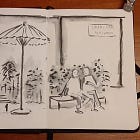
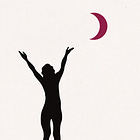
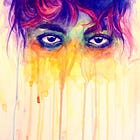
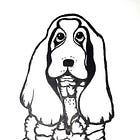


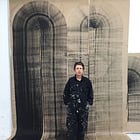

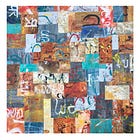
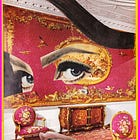
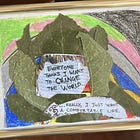

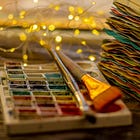
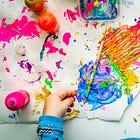
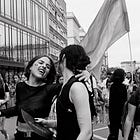
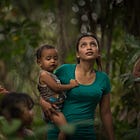
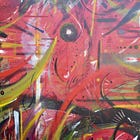

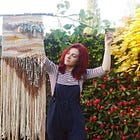




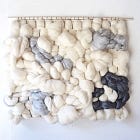
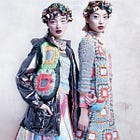

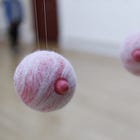




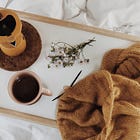
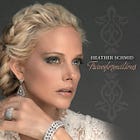


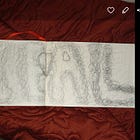
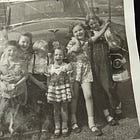



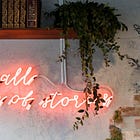

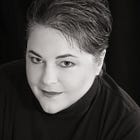
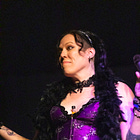
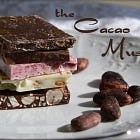

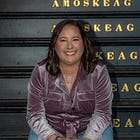


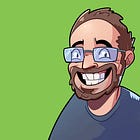
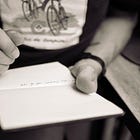
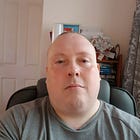

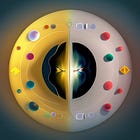

Wow- this is an incredible roundup! I'm saving it and excited to slowly make my way through the interviews. Amazing!
ohhh this is a lovely resource, will add it to my Art Side stack and just wow!